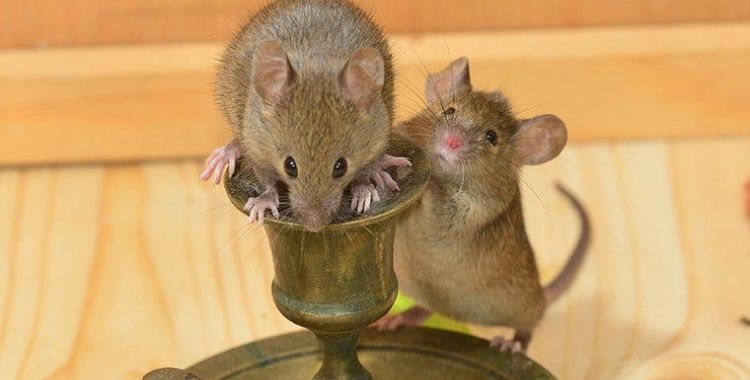
Why Do I Have Mice in My House?
Why Do I Have Mice in My House?
Finding a house mouse in your home can be both unsettling and frustrating. These unwelcome guests are not just a minor annoyance. Mice carry diseases that can pose serious health risks to you and your family, especially when mouse droppings and urine contaminate surfaces or food.
A common misunderstanding is that mice only invade dirty homes. The truth is that even spotless homes can face pest problems. Mice are driven by survival instincts, and whether it’s a house mouse, wood mouse, or field mouse, they will explore any space offering food, water, and shelter. If your home provides easy access to these essentials, mice will not hesitate to move in.

Common Reasons for a Mouse Infestation
Mice, especially the house mouse and field mouse, are resourceful and opportunistic creatures. They seek shelter during cold or wet seasons, and your home offers warmth, nesting material, and security from natural predators like barn owls. Let’s break down the key reasons why these pests might show up.
1. Easy Food Sources
Mice eat a wide range of foods, from open pantry items to pet food and even crumbs behind appliances. Unsealed trash cans, scattered birdseed, opened food packaging or leftovers are all magnets for a hungry mouse.
2. Weather Changes
When outdoor conditions become harsh, mice seek shelter indoors. Crawl spaces, basements, garages, and attics become prime real estate for mice looking to avoid cold, heat, or rain.
3. Entry Points
Even a gap the size of a dime is large enough for a house mouse to squeeze through. Cracks, holes in walls, damaged vents, and gaps under doors are all common pathways.
4. Nesting Opportunities
Mice are always on the lookout for prime nesting material such as paper, insulation, fabric scraps, and pet hair. Once a female mouse secures a nest, she can produce multiple litters in a short time, quickly leading to a larger infestation.
Signs You Have Mice in Your House
Scratching and scurrying noises inside walls are another early clue. Mice will also build nests from any available soft material, often in hidden areas like crawl spaces, attics, and behind appliances.
The sudden appearance of mouse droppings is often the first sign of trouble. These tiny black pellets usually show up in corners, cupboards, or near food sources. You might also spot gnaw marks on furniture, electrical wiring, or packaged food.
How to Get Rid of Mice in Your Room
Once you’ve confirmed a mouse problem, fast action is essential to prevent it from spreading.
Step 1: Seal Entry Points
Carefully inspect your home for gaps or cracks, especially around doors, windows, and vents. Seal them with caulk or steel wool to block access for other mice.
Step 2: Trap and Remove Mice
Use a combination of traps depending on your approach. Snap traps offer quick results, glue traps help confirm activity, and humane traps allow for catch-and-release if you prefer a no-kill solution.
Step 3: Eliminate Food Sources
Store food in sealed containers, clean up crumbs and spills immediately, and secure trash cans to prevent mice from returning.
Step 4: Use Natural Deterrents
Strong scents like peppermint oil, cayenne pepper, and cloves help discourage mice from nesting and foraging in your home.
The Role of Integrated Pest Management
Integrated pest management offers a complete strategy to prevent mice and other pests from becoming long-term problems. This approach combines sealing entry points, reducing food and water access, removing prime nesting material, and, when necessary, working with professional pest control experts.
Dead Mouse and Other Risks
If you discover a dead mouse in your home, it’s important to remove it promptly and safely. Dead rodents can attract other pests and spread bacteria. Always use gloves and sanitize the area thoroughly to maintain effective disease control.
Why Professional Pest Control Makes a Difference
Mice carry diseases and can create expensive property damage, especially when they chew on electrical wiring or insulation. If home remedies and humane traps don’t solve the issue, professional pest control is the safest and most effective way to get rid of mice and prevent future infestations.
At Pest Friends, we use proven techniques to locate mouse entry points, eliminate existing infestations, and prevent mice from returning. Our integrated pest management plans are designed to handle both small mouse problems and severe infestations.
Prevent a House Mouse Infestation
Now you know why mice show up in clean homes, how to spot the early warning signs like mouse droppings, gnaw marks, and scratching noises, and what steps to take to prevent mice from turning your home into theirs. No matter the mouse type, fast and strategic action can save you from major pest problems.
If you suspect mice or other pests in your home, contact Pest Friends today for reliable pest control and expert inspection. Get started by visiting our website at mypestfriends.com.
People Also Ask
What attracts mice in your house?
Mice eat anything from leftover crumbs to pet food. Open trash cans, unsealed pantry goods, and water sources make homes attractive.
Does one mouse mean an infestation?
A single mouse often means there are other mice nearby. Female mice can produce multiple litters quickly, so fast action is important.
What do mice hate the most?
Mice hate the strong scents of peppermint oil, cloves, and cayenne pepper. Using these natural deterrents in entry points may reduce activity.